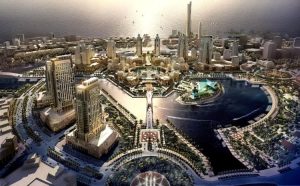Introduction
Welcome to a captivating exploration of “Connected Communities” within the context of smart cities. In this enlightening journey, we’re joined by Dr. David Reynolds, a distinguished urban planner and technology visionary. Together, we’ll unravel the intricate tapestry of how real estate is shaping these connected urban spaces, where technology and collaboration redefine the very essence of community living. Whether you’re an urban dweller, a tech enthusiast, or a real estate aficionado, this article promises to open your eyes to the exciting future of city life.
Connected Communities: Redefining Urban Living
Our journey begins with a profound understanding of the concept of “Connected Communities” in smart cities. These are urban spaces where technology not only connects people but also redefines how we interact with our surroundings. Real estate is at the heart of this transformation, creating the physical foundations for these communities.
Real Estate’s Pivotal Role in Community Building
Community building starts with the places we call home. Real estate developers play a pivotal role in fostering connected communities. From shared spaces that encourage interaction to modern amenities that enhance convenience, real estate is the canvas upon which these vibrant communities are painted.
Table: Key Aspects of Real Estate in Connected Communities
| Aspect | Contribution to Connected Communities |
|---|---|
| Shared Amenities | Facilitating social interaction |
| Co-Working Spaces | Promoting collaboration and innovation |
| Smart Home Tech | Enhancing convenience and connectivity |
| Green Spaces | Providing recreational and communal areas |
| Accessibility | Supporting diverse, inclusive communities |
The Tech-Infused Neighborhoods of Tomorrow
In connected communities, technology is seamlessly integrated into daily life. Smart homes, IoT-powered infrastructure, and high-speed internet connectivity are standard features. Real estate developers incorporate these innovations, making technology an integral part of urban living.
Collaborative Spaces: Fostering Innovation and Togetherness
Collaboration is a cornerstone of connected communities. Real estate developers design co-working spaces, communal gardens, and shared amenities to foster innovation and togetherness. These spaces encourage residents to connect, work, and collaborate, transforming neighbors into collaborators.
Smart Transportation: Easing Urban Mobility
Connected communities prioritize efficient, sustainable transportation. Real estate developers work in tandem with transportation planners to create well-connected neighborhoods with accessible public transit, bike-sharing programs, and electric vehicle charging infrastructure.
Safety and Security in Connected Communities
Safety and security are paramount in urban living. Real estate in smart cities integrates advanced security systems, CCTV surveillance, and community-based safety initiatives. These measures not only enhance residents’ peace of mind but also foster a sense of belonging.

Case Studies: Exemplary Smart City Neighborhoods
Let’s delve into real-world examples where real estate and smart city initiatives have converged to create exemplary connected communities. From the tech-infused streets of Songdo, South Korea, to the collaborative spirit of Amsterdam’s De Ceuvel, these neighborhoods showcase the power of real estate in redefining urban living.
Dr. David Reynolds’ Vision: Connected Cities of the Future
To provide expert insights into the future of connected communities, we turn to Dr. David Reynolds, an urban planner and technology visionary. With a deep commitment to urban connectivity, he shares his vision of cities where real estate seamlessly integrates technology and fosters communities that thrive on collaboration and innovation.
Conclusion
As we conclude our journey through the world of connected communities in smart cities, it’s clear that real estate is a driving force behind the transformation of urban living. Technology and collaboration redefine how we connect with our neighbors and surroundings. Whether you’re an advocate for collaborative living or someone curious about the future of city life, remember that you, too, are an integral part of this transformative journey. Embrace the possibilities, support real estate developments that foster connectivity, and be a catalyst for the evolution of our cities towards a more connected and vibrant future.



